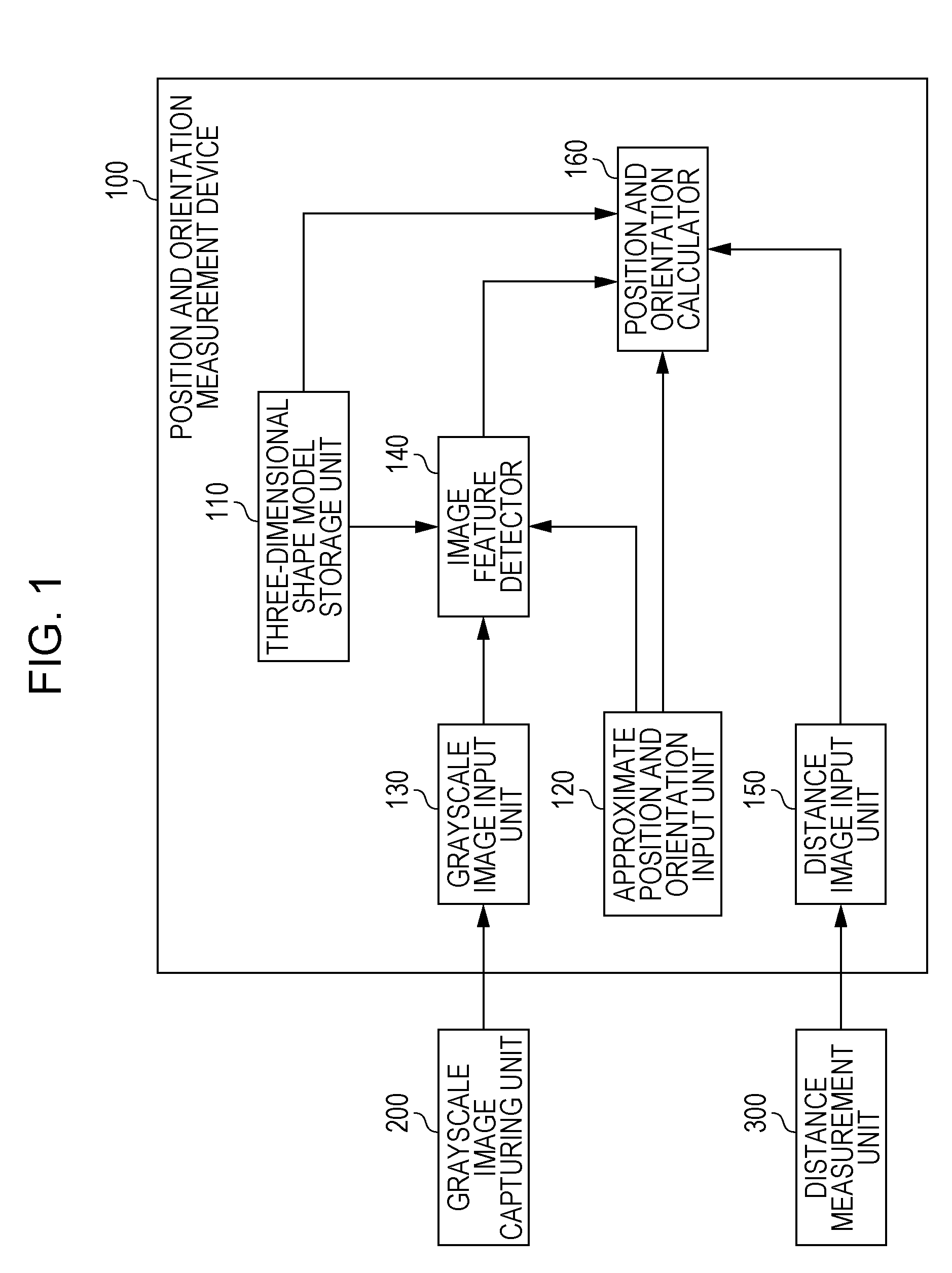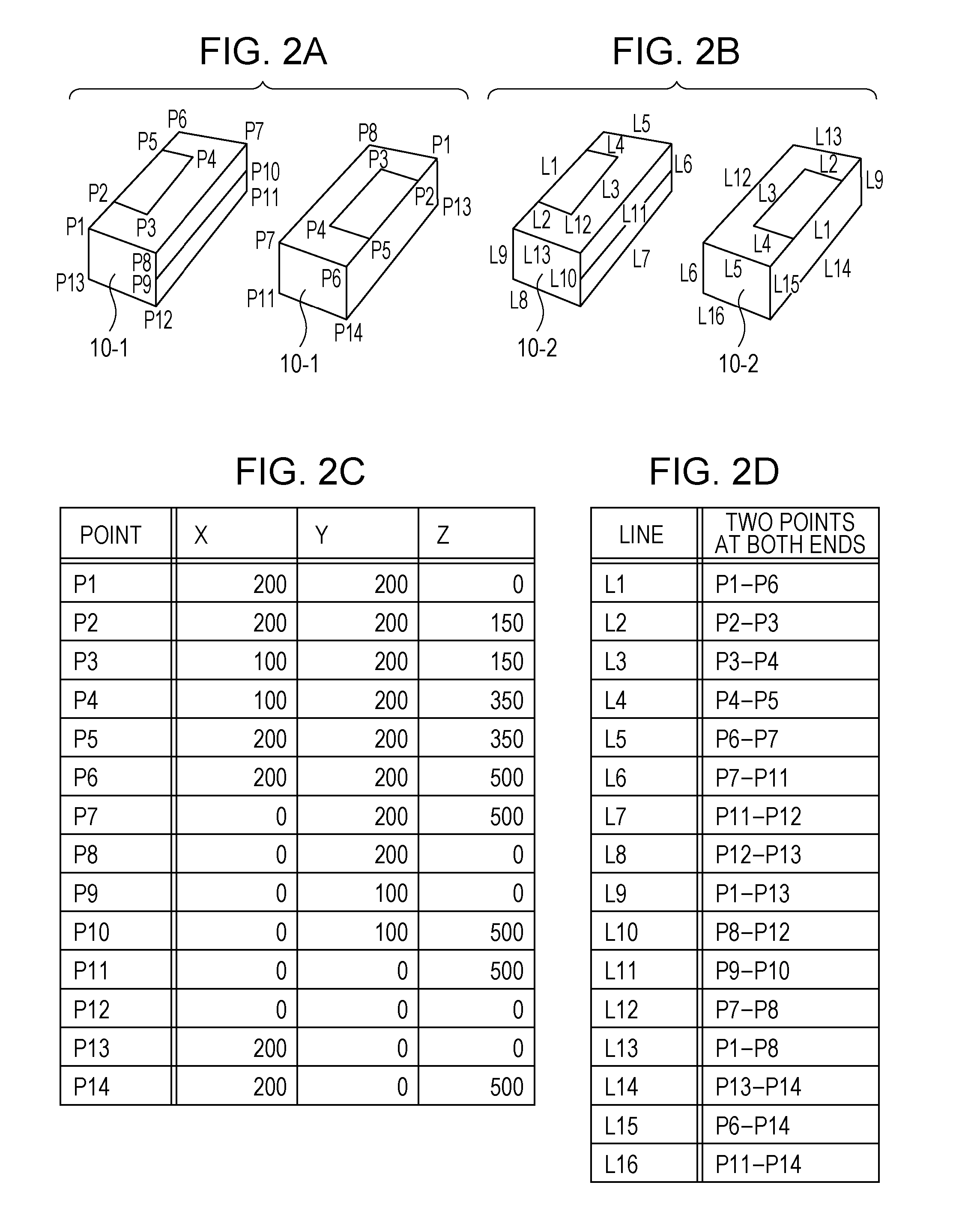Position and orientation measurement device and position and orientation measurement method
a technology of positioning and orientation measurement and measurement method, which is applied in the direction of instruments, image analysis, image enhancement, etc., can solve the problems of low measurement accuracy of a position component (depth) in the direction of the optical axis of the camera, robots are beginning to perform complex tasks, and the number of association errors. , to achieve the effect of quick and robust measurement of position and orientation and reducing the number of association errors
- Summary
- Abstract
- Description
- Claims
- Application Information
AI Technical Summary
Benefits of technology
Problems solved by technology
Method used
Image
Examples
first embodiment
[0028]In a first embodiment, first, the position and orientation of an object is estimated by using information of a grayscale image, and then the position and orientation is estimated so that a model is fitted to a feature of the grayscale image and a distance image at the same time.
[0029]In the present embodiment, an initial value of the position and orientation is given in advance. When a difference between the actual position and orientation and the initial value is large, an association error occurs frequently when associating a distance image (three-dimensional point group) with a three-dimensional shape model by projecting a model. In the first embodiment, before associating the distance image, an overlap area between a projection image of the model and an actual object image is enlarged as much as possible by estimating the position and orientation using a feature of the image, so that the number of association errors is reduced when associating the distance image.
[0030]FIG....
modified example 1-1
Reducing the Degree of Freedom in 2D
[0096]In the first embodiment described above, in the estimation of the position and orientation using only the grayscale image, which is a pre-stage process, all of the six freedoms of the position and orientation are estimated. However, in this process, not all the freedoms are required to be estimated, and only the components, by which the position and orientation can be estimated with a high degree of accuracy using the grayscale image, may be estimated. When the background and the structure of the object are complicated, it is inevitable that the edges on the grayscale image are mis-associated with the model. When the components to be estimated are limited, over-fitting to the measurement data is mitigated, so that robust property against association error can be expected to be improved. In the present modified example, the first position and orientation is part of components of the position and orientation. Specifically, the first position a...
modified example 1-2
Association May be Retried in Repetitive Calculations
[0101]In the first embodiment described above, in the calculation process of the position and orientation in steps S1030 and S1040, the association information between the measurement data and the three-dimensional shape model is used as fixed information. However, in practice, the association information varies depending on a change of the position and orientation to be estimated. Therefore, the association process may be retried after the position and orientation is updated. However, the association process takes time, so that the association process is not retried every time the position and orientation is updated, but may be retried after the position and orientation is updated several times.
PUM
 Login to View More
Login to View More Abstract
Description
Claims
Application Information
 Login to View More
Login to View More - R&D
- Intellectual Property
- Life Sciences
- Materials
- Tech Scout
- Unparalleled Data Quality
- Higher Quality Content
- 60% Fewer Hallucinations
Browse by: Latest US Patents, China's latest patents, Technical Efficacy Thesaurus, Application Domain, Technology Topic, Popular Technical Reports.
© 2025 PatSnap. All rights reserved.Legal|Privacy policy|Modern Slavery Act Transparency Statement|Sitemap|About US| Contact US: help@patsnap.com



